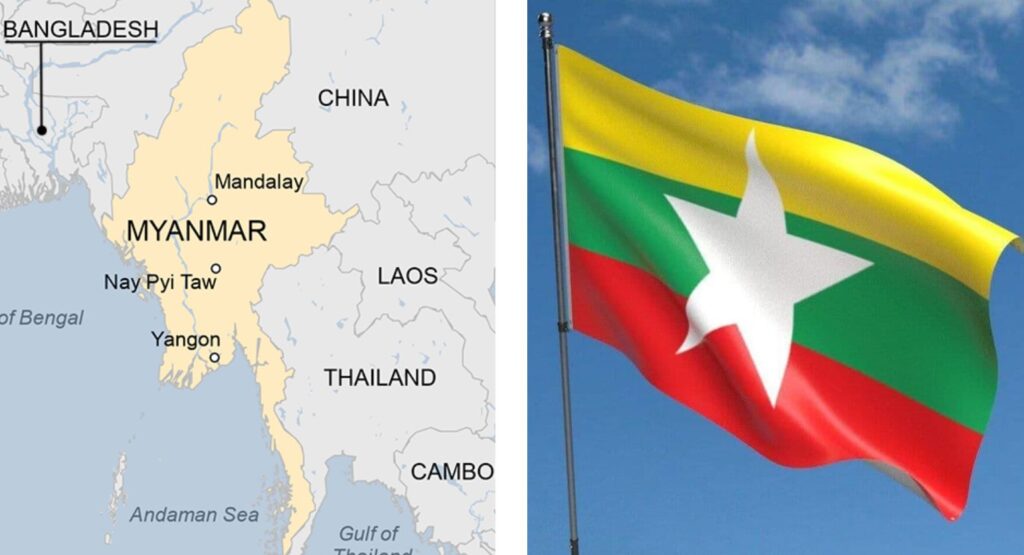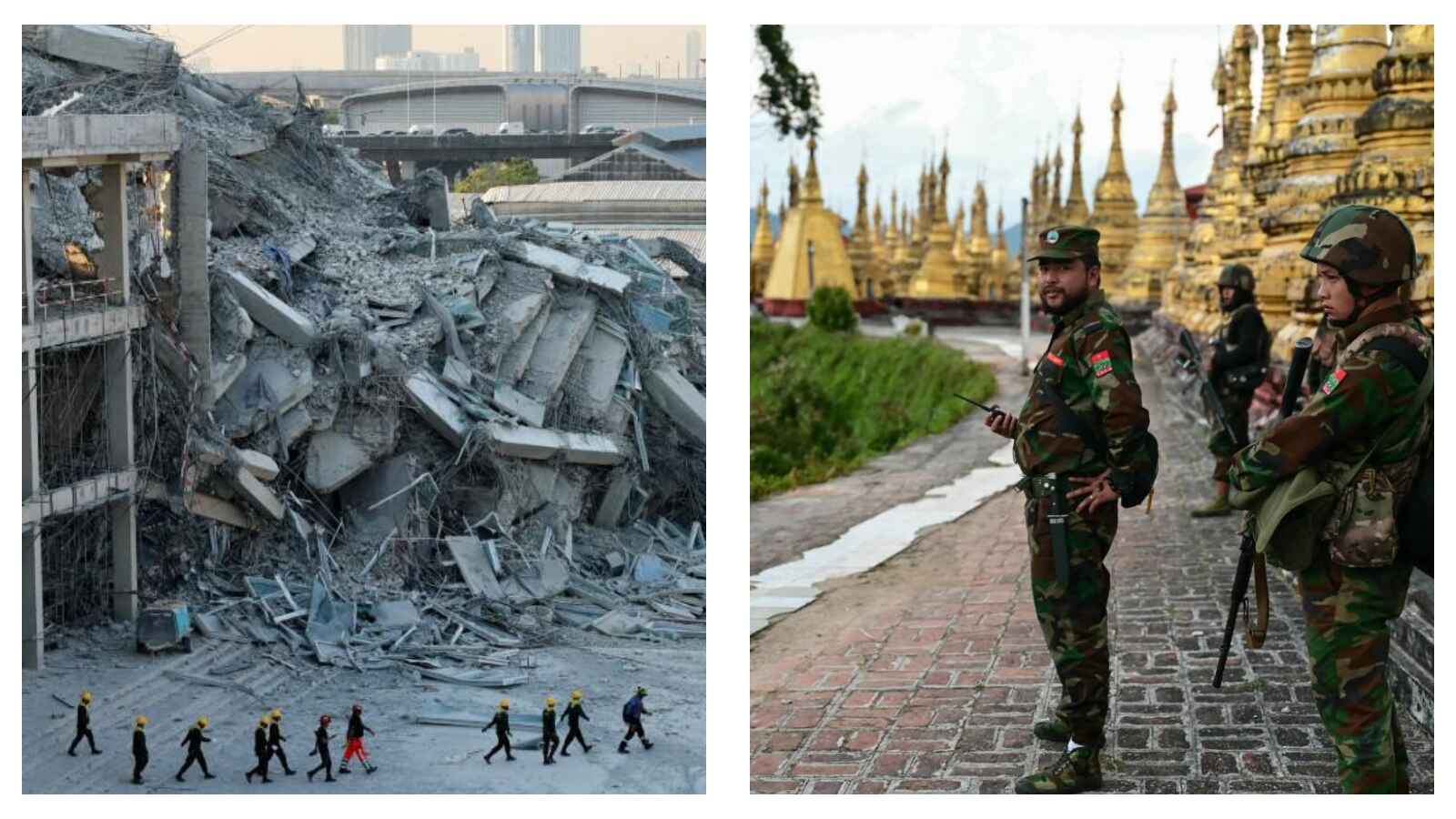By Jacinth Banite
Myanmar continues to grapple with the aftermath of a 7.7-magnitude earthquake that struck its central areas on March 28 as the death toll passes 3600, injuries top 5000, and around 140 people remain missing.
Most victims were residents of Mandalay, at the quake’s epicentre, where an apartment building notably collapsed following the powerful tremor.
The resulting devastation, some of Asia’s worst in decades, added to the shadow of a four-year civil war and ongoing military rule.
Civil war provides backdrop to quake devastation
Myanmar’s armed forces, known as the Tatmadaw, seized power from the democratically elected government of Aung San Suu Kyi in a February 2021 coup, leading to nationwide clashes involving anti-military ethnic armed groups and militant organisations working for the exiled National Unity Government (NUG).
Since taking over the government four years ago, the military junta has been accused of inflicting airstrikes on civilian populations using weapons obtained from allies Russia and China.
The regime has often attributed the attacks to the alleged presence of resistance forces in targeted areas.
Artillery does not seem to be enough to win the civil war, though, with the junta reportedly suffering major setbacks while resistance forces retake swathes of territory from the regime.
Yet, even as the Tatmadaw’s reign weakens and the resistance gains major advantages, last month’s earthquake proved not enough for both sides to hold fire.
READ MORE: Global community responds to deadly earthquake in Myanmar

Clashes continue despite ceasefire declarations
The NUG declared a two-week offensive ceasefire in quake-hit areas on March 30 in order to give way to rescue operations and the deployment of relief supplies for victims.
On April 2, the military junta made a similar declaration effective until April 22.
However, both sides warned of taking necessary measures if provoked, and it did not take long for tensions to rise again.
The NUG accused the military regime of breaking its own ceasefire declaration by indiscriminately launching airstrikes on several parts of Myanmar since April 2.
Targeted areas include those affected by the earthquake.
“Following the devastating earthquake that struck Myanmar on March 28, 2025, the military junta carried out 92 airstrikes and artillery attacks, resulting in the deaths of 72 civilians, including six children under the age of 18 and 30 women,” the NUG wrote on X (formerly Twitter) on April 9.
Around 36 of those attacks transpired in Sagaing and Mandalay, the worst affected regions in last month’s natural disaster, it said.
While the junta has yet to release an official response to NUG’s claims, it earlier accused resistance forces of attacking military bases and vessels despite the temporary peace declaration.
Reports from independent media have said that an alliance of resistance forces completely seized Indaw township in Sagaing’s Katha district on April 7 after defeating the junta’s last base in the area.
The Kachin Independence Army (KIA), the People’s Defence Force (PDF), and the All Burma Students’ Democratic Front (ABSDF) launched a successful joint offensive on the remaining junta post situated on a hill locally known as Japan Cave.
The alliance said the move was a retaliation for the military’s continued aerial assaults.
A combined resistance force had been attempting to gain full control of Indaw since August 2024.
YOU MAY ALSO LIKE: International news: ‘Someone is watching’ – IIMM chief on Myanmar conflict

UN reacts to reports of further violence
Following reports of the junta’s use of airstrikes despite the post-quake ceasefire declarations, the United Nations Human Rights Office voiced its frustrations.
“At a moment when the sole focus should be on ensuring humanitarian aid gets to disaster zones, the military is instead launching attacks,” spokesperson Ravina Shamdasani said in a statement on April 11.
Shamdasani then conveyed UN rights chief Volker Turk’s call for the removal of “any and all obstacles to the delivery of humanitarian assistance” to Myanmar and for the cessation of military operations.
Citing the UN’s own findings, the spokesperson revealed that Myanmar’s “military forces have reportedly carried out over 120 attacks” since the earthquake.
“More than half of them [were] after their declared ceasefire was due to have gone into effect on 2 April,” she said before adding that “numerous strikes have been reported in populated areas, many of them appearing to amount to indiscriminate attacks and to breach the principle of proportionality in international humanitarian law”.
The UN’s Independent Investigative Mechanism for Myanmar (IIMM) also decried the attacks.
“Indiscriminate air strikes or targeted attacks on civilians may constitute war crimes and/or crimes against humanity,” it said in an April 11 statement.
“The Mechanism has intensified its investigations into these incidents to determine the nature of the crimes and identify who is most responsible.”
READ NEXT: Sudanese refugees in Egypt at risk as UNHCR suspends medical aid
